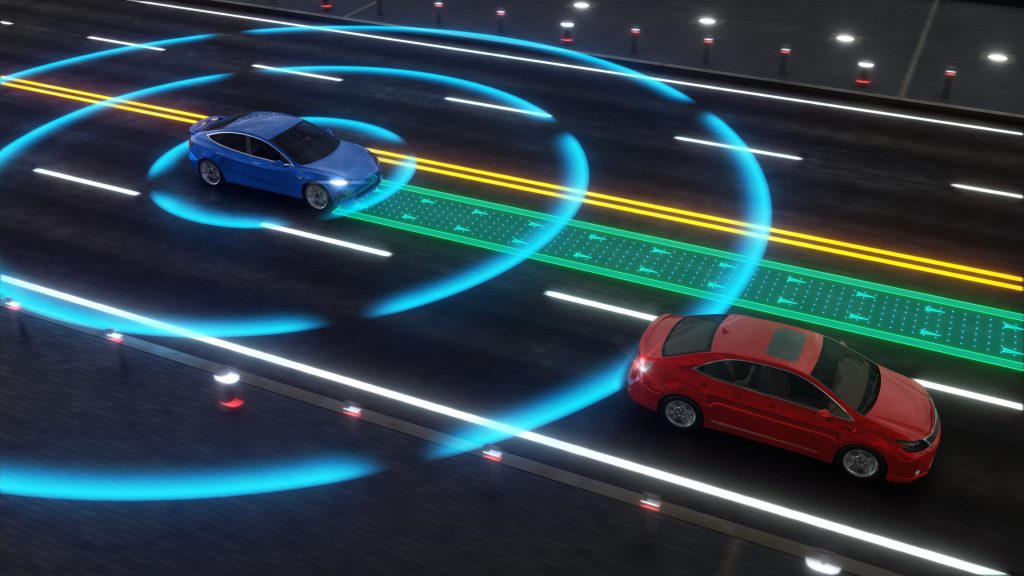Is Technology Making Roads Safer for Drivers?

There are many different technologies that are making the roads safer for drivers. Some of these technologies come standard in vehicles sold today while others are more commonly included in vehicles as addons.
Some of these safety features, like lane departure warnings, blind spot warnings and backup cameras, have been common long enough that they’re now frequently available in pre-owned vehicles. Others, like anti-lock brakes and stability control, may have been keeping you safe without you even consciously using them.
Auto accident fatalities have been trending downward in recent years. Many experts cite improved safety features as one of the reasons roads are becoming safer for drivers.
Forward Collision Warning and/or Emergency Braking
Many newer cars offer some kind of forward collision warning. The car will sound an alert or the steering wheel will start to vibrate if sensors or cameras in the front of your car detect an imminent forward collision.
Some vehicles go a step further with forward collision emergency braking – essentially your car will automatically slam on the brakes if it determines you’re about to hit a vehicle or object in front of you.
Lane Departure Warnings and Lane Assist
Lane departure warning systems usually make a noise or display some kind of blinking indicator on your dashboard to let you know that you’re drifting out of your lane. Lane assist takes things a step further by essentially keeping your vehicle centered in its lane. It’s important to note lane assist is very different from an autonomous vehicle, but it can help prevent accidents, especially if you’re distracted.
Backup Cameras
Every new vehicle sold in the United States has been required to have a backup camera since the 2019 model year. Even during the early years of the technology, NHTSA analysis suggested backup cameras reduced back-over injuries by as much as eight percent and deaths by as much as 31 percent. The NHTSA estimates backup cameras in every vehicle might save between roughly 60 and 70 people per year. In a country where between about 36,000 and 38,000 people are estimated to die from auto accidents each year, that number may not seem very impactful, but it certainly makes a difference to those who could be injured.
Airbags
These days it’s difficult to find a working car that doesn’t have airbags of some kind. Estimates suggest airbags reduce deaths in accidents by as much as 11 percent. Curtain and side airbags may increase auto accident deaths by between eight and 42 percent.
Adaptive Headlights
Wouldn’t it be nice if headlights pointed in the direction you were turning? That’s the idea behind adaptive headlights. They pivot slightly to illuminate turns. Insurance studies have suggested adaptive headlights might reduce damage claims by nearly six percent and accident claims by just over one percent.
While that may not seem like a huge number, it’s not nothing when you consider there are millions of accidents in the U.S. every year.
Blind Spot Monitor
One of the more useful accident-avoidance technologies increasing in popularity in recent years are blind spot detection systems. Your vehicle might throw up a light on your side mirrors if there’s a car, truck or SUV in your blind spot. If you put on your blinker to merge into that lane your vehicle may start sounding off chimes to warn you. Some blind spot detection systems will even automatically brake or steer the car away from the other vehicle.
The Insurance Institute for Highway Safety estimates that a blind spot detection system can reduce lane-change crashes by as much as 13 percent and lane-change accidents that result in injuries by as much as 23 percent.
Is Your Vehicle Safe for the Roads in Baltimore and Washington DC?
One of the benefits of finding a newer preowned vehicle are the addition of modern safety features. Many of the vehicles on our Easterns Automotive Group lots are equipped with an array of cutting-edge safety features designed to help you avoid accidents.
If it’s time to get you and your family into a safer vehicle, consider browsing our inventory online or visiting a local Virginia or Maryland location near you.

